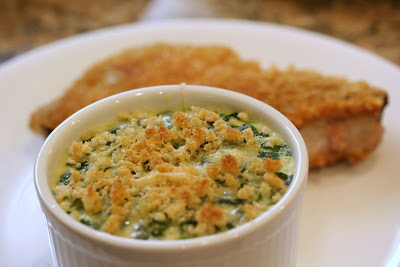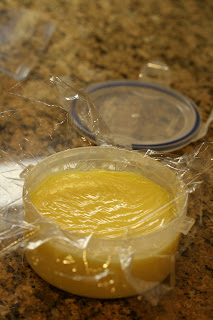
Valentine's day is coming up, and that's a real high pressure event for any guy. My wife and I actually celebrated an early V-day on Sunday, so the pressure is over for me! If any of you fellas are reading this, here is some advice that can turn this day into a culinary success.
Find out what she likesLike most women, my wife appreciates flowers. Her favorite flowers are yellow roses, so I bought her a yellow rose. Other girls may like tulips or daisies, or non-floral stuff like candles, too. This will come in handy when setting the table.
What kind of food?
Does she like Italian food? Mexican? Chinese? This is important. You don't want to slave away in the kitchen for hours just to find out she doesn't even like the type of food. If you don't know, ask her (or her friends)! My wife's favorite cuisine is Japanese, so I was able to plan a menu around that.
Plan the menu
This is very important. Make sure you have at least one appetizer in addition to a main course. If your significant other has a sweet tooth, don't skimp on dessert! Think about what you plan to drink that night as well.
I flipped through the pages of
Washoku: Recipes From The Japanese Home Kitchen
and found two recipes I was sure she would enjoy:
Lemon-Simmered Kabocha Squash (
kabocha no sawayaka ni), and
Miso-Marinated Broiled Black Cod (
tara no misoyaki). I would also need to make rice to accompany this, and decided on green tea as the beverage. I opted for no dessert per my wife's request to keep it a light meal (you don't want to end up with food coma on Valentine's Day!).
Always read recipes a couple of days before the event--you never know what you may need to do beforehand.
Miso-Marinated Broiled Black Cod
(adapted from Washoku )
)
Serves 2
3/4 pounds black cod with skin intact, cut into 2 pieces
1 1/2 cups sweet, light miso
1/3 cup mirin
1 T yuzu peel, grated lemon or orange zest (optional)
Lemon or lime wedges (optional)
To prepare the fish/marinade:1. Rinse the fish pieces under cold running water and pat dry.
2. To make the marinade, combine miso, mirin and yuzu peel in a medium-sized container and stir to mix well.
3. Push aside 2/3 of the marinade in the container. Lay a single piece of
sarashi cloth (equivalent to two layers of cheese cloth, or you can make do with a paper towel as I did) so that half of it is on top of the marinade. Lay one of the fish pieces on the marinade-moistened cloth, and fold the remaining cloth over the fish to enclose it. Spread half of the remaining marinade on top of the cloth, and repeat the process with the second piece of fish. The last half of the marinade will go on top.
4. Place plastic wrap over the top of the fish "sandwich", pressing lightly to ensure even distribution of the marinade.
5. Marinate the fish at cool room temperature (no more than 75 F) for 6+ hours or in the fridge for up to 3 days.
To broil:1. Preheat a broiler.
2. Scrape away the miso marinade and remove the fish from its cloth wrapping.
3. Place the fish pieces skin side up on a shallow broiler-safe pan and place in the broiler about 3 inches away from the heat source.
4. Broil for 3 to 4 minutes until skin begins to bubble, then flip the pieces.
5. Broil for another 2 to 3 minutes. The fish should be slightly crusty and golden on the surface and white on the inside.
Basic Sea Stock(adapted from Washoku )
)
Makes about 1 quart
15 to 20 square inches kombu (dried kelp)
4 1/4 cups cold water, preferably filtered or spring water
1/2 cup loosely packed katsuo-bushi (dried bonito flakes)
1. Place kombu in a pot with the water. Soak for 10-15 minutes before placing the pot over medium heat.
2. Remove the pot from the heat when small bubbles begin to break on the surface and at the edge of the pot. Add the katsuo-bushi, scattering the flakes across the water. The flakes should begin to sink after a few minutes.
3. Within 3 to 4 minutes after adding the fish flakes, strain the stock through a
sarashi cloth, or paper towel-lined strainer as I did. You're done!
Note: This stock must be used fresh; it loses its flavors when frozen. It will keep for 3-4 days in the fridge.
Lemon-Simmered Kabocha Squash(adapted from Washoku )
)
Serves 2
1 cup Basic Sea Stock (above)
1 small lemon, zest removed and reserved, lemon juiced
2 T mirin
1/4 kabocha squash (10 oz), cut into 8 beveled chunks with seeds removed but skin intact
1 teaspoon light-colored soy sauce
1/2 teaspoon soy sauce
Lemon or lime slices for garnish, if serving chilled (optional)
1. Combine stock, lemon juice, and mirin in a pot wide enough to hold the squash pieces in a single layer.
2. Bring to a simmer over low heat, and skim away any froth.
3. Add the squash pieces, skin side down, in a snug single layer.
4. Place two layers of parchment paper over the squash, cut in a circle 1 inch smaller in diameter than your pan and weigh it down with a small lid from another pot.
5. Adjust the heat to maintain a steady (but not vigorous) simmer. Cook for 3-4 minutes, until barely tender. With a toothpick, you should be able to pierce the squash but still meet some resistance.
6. Flip the squash pieces over so the skin faces up. Replace the parchment and lid, and simmer for another 2 minutes. Test again with a toothpick; you should be able to pierce the skin without much difficulty, but the flesh shouldn't be so soft it crumbles.
7. Add the light-colored soy sauce, swirling the pan to make sure its evenly distributed, then simmer for another minute or two. The toothpick should meet no resistance now. Add the soy sauce, swirl again, and simmer for a final 30 to 40 seconds.
8. Remove the pan from heat and allow the squash to cool in the pan. When it's ready to be served, spoon the leftover liquid over the squash.
The game plan
This was actually the first time I cooked Japanese food, so there were quite a few ingredients I did not have, and techniques I have never used. I needed a game plan.
1 day aheadBuy groceries
Marinate fish
Make sea stock (
dashi)Set the table
2 hours beforeMake kabocha
Make rice
10 minutes beforeBroil the fish
For most of the Japanese ingredients, I went to my local Japanese market,
Nijiya. I was pleasantly surprised to see they actually had yuzu! I was going to use lemon zest for the fish marinade, but fresh yuzu zest is even better since it's more aromatic,
and it's the authentic Japanese ingredient!

I finally had the ingredients and it was time to marinate. Now, I have never heard of a technique where the main ingredient wasn't touching the marinade (the recipe called for a layer of cloth between the fish and miso), and was worried that the miso flavor would not penetrate the fish. However, I stuck to the recipe, substituting a paper towel for the sarashi cloth. The other thing was that it seemed like it called for a heck of a lot of miso! But once again, I decided to trust the recipe. Once the fish was all wrapped up and covered in miso, I placed it into the refrigerator overnight, hoping the miso would somehow find its way through the paper towel and into the fish.
 The sea stock, or dashi, was very easy to make. The only thing that didn't seem right was that the bonito flakes didn't sink into the water after 4 minutes. Maybe I didn't heat the water enough? It tasted okay though, so I saved it and put it in the fridge.
The sea stock, or dashi, was very easy to make. The only thing that didn't seem right was that the bonito flakes didn't sink into the water after 4 minutes. Maybe I didn't heat the water enough? It tasted okay though, so I saved it and put it in the fridge. The day of, I made sure not to forget to make rice (I always forget that!), and I made the kabocha in advance, since it's supposed to be served at room temperature. The recipe called for bevelling all the corners off, so I did that dutifully, though I'm not sure what difference it made.
The day of, I made sure not to forget to make rice (I always forget that!), and I made the kabocha in advance, since it's supposed to be served at room temperature. The recipe called for bevelling all the corners off, so I did that dutifully, though I'm not sure what difference it made.
I had never made kabocha before, so I didn't really know how it was going to behave while cooking. I think I overcooked some of them, however, because some parts were quite dry and crumbly. Of course, I saved the best ones for my wife.

As soon as she came home (she was at a baking class), I took the fish out of the fridge and unwrapped the paper towel and miso. To my delight, the paper towel had become moist, and the surface of the fish had changed color, indicating to me that it had absorbed the miso!

I popped it in the oven for about seven minutes (making sure to flip it halfway). It looked really good coming out of the broiler. The skin was crispy and the surface was slightly charred. Garnished with a lemon wedge, it looked perfect. Hopefully my wife would think it tasted as good as it looked!

 Bacon...mmmmmmmmmmmmm.
Bacon...mmmmmmmmmmmmm.













































